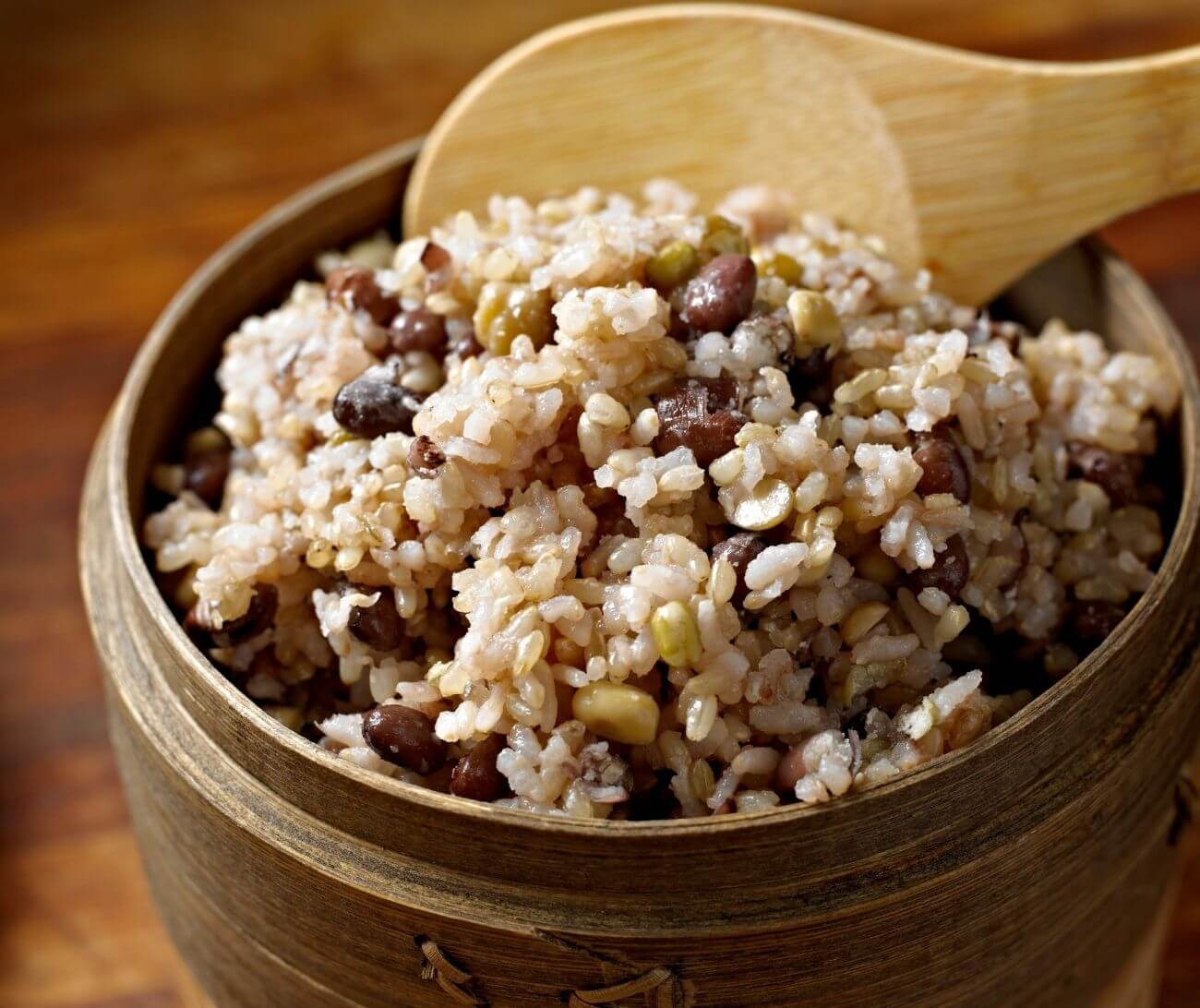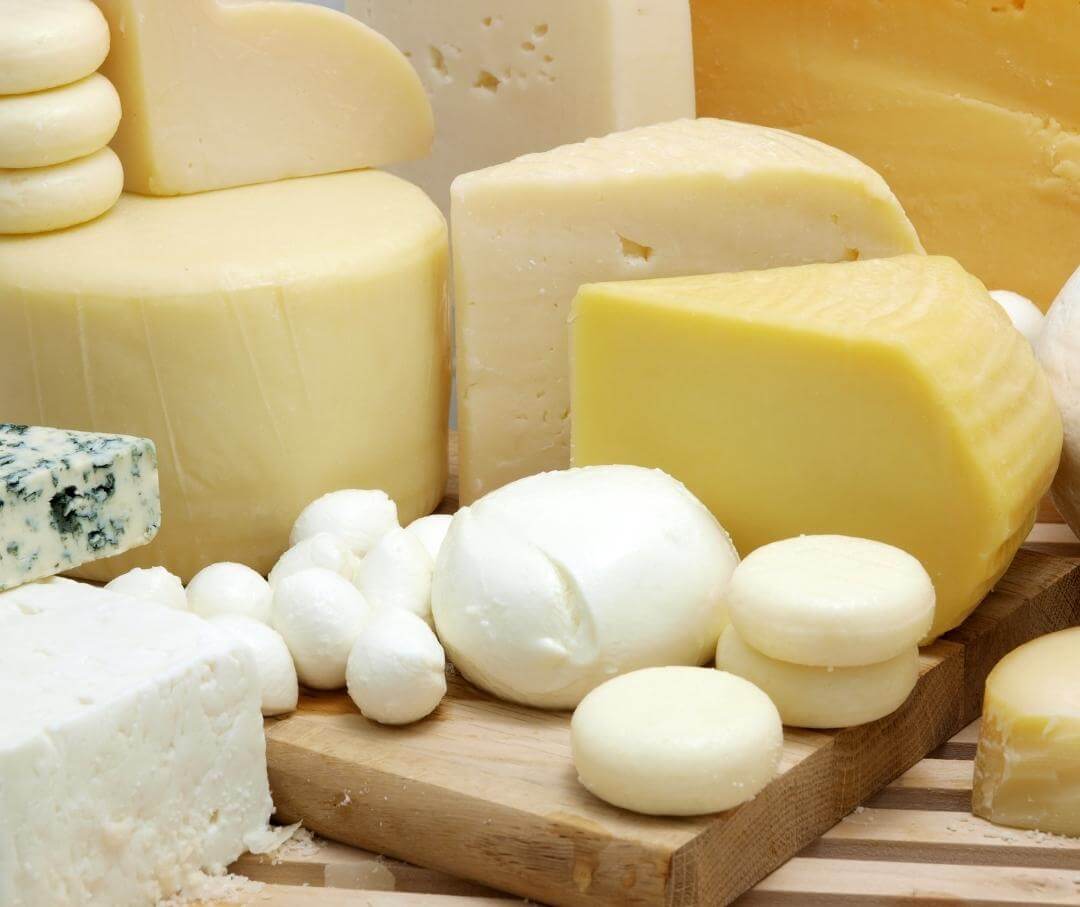More and more people are seeking natural GLP-1 boosters due to the rising popularity of GLP-1 medications for weight loss. Although medication can be a solution for some people, off-label or non-prescribed usage poses a health risk. If you'd like to explore natural ways to increase GLP-1 levels, read this article to learn how GLP-1 can contribute to weight loss and explore dietary sources that naturally increase GLP-1.
Understanding GLP-1
Glucagon-like peptide-1 (GLP-1) is a hormone synthesized mainly in intestinal cells. This hormone plays a crucial role in the glycemic response to meals. When you eat a meal, intestinal cells sense nutrients that activate GLP-1 receptors. The synthesis of GLP-1 influences the synthesis of crucial endocrine hormones: insulin (decreasing blood glucose levels) and glucagon (increasing blood glucose levels).1
GLP-1 increases insulin synthesis while suppressing glucagon production, which together help improve blood glucose levels.
GLP-1 agonists are medications that act like GLP-1 and help regulate blood glucose levels. They are commonly prescribed for treating obesity and type 2 diabetes, and they also include Ozempic (Semaglutide) and Victoza (Liraglutide) for diabetes and Wegovy (Semaglutide) and Saxenda (Liraglutide) for obesity. Many other approved GLP-1 agonists are also available.
Exploring How GLP-1 Aids in Weight Loss
GLP-1 was discovered in the 1980s, and soon after, it was revealed that the molecule enhances insulin secretion response to meals and inhibits food intake, gastric emptying, and glucagon secretion. That's why GLP-1 receptor agonists have been used for the treatment of obesity and type 2 diabetes alongside nutrition and lifestyle intervention.2
Since research has shown the potential of GLP-1 medications in glycemic control, the question arises: can increasing GLP-1 naturally help with weight loss?
An increase in GLP-1 levels may help with weight loss by stimulating insulin secretion while inhibiting glucagon secretion, which can help prevent spikes in glucose levels after meals. It also inhibits glucose production by the liver, contributing to lower plasma glucose concentration overall.3
Additionally, GLP-1 plays a role in satiety, appetite regulation, and food intake, as GLP-1 receptors are also found in the brain. A study investigated the acute effects of injections of a GLP-1 receptor agonist (acting as GLP-1) into the bloodstream. The results showed that participants with obesity and diabetes who were given GLP-1 agonists experienced decreased food intake and food-related brain responses, as indicated by their MRI scans.4
Furthermore, GLP-1 has been shown to suppress gastric emptying. In a randomized, double-blind study, healthy individuals were given a meal and a GLP-1 antagonist, which blocks the action of GLP-1 normally produced in response to meal intake. Blocking GLP-1 actions resulted in a significantly higher rate of gastric emptying and glycemic response.5
Supplements That Increase GLP-1

GLP-1 synthesis can be lower in people with overweight, obesity, and type 2 diabetes. Dietary interventions can help stimulate GLP-1 secretion and improve glucose control in people with impaired glucose metabolism, although the effects are not likely to reach the levels achieved by pharmaceutical interventions. Additionally, the effects will likely vary based on individualistic differences such as glucose tolerance, body weight, sex, and medication use.6
GLP-1 levels drop after an overnight fast and increase after food intake. GLP-1 release is stimulated by nutrients including, but not limited to, amino acids, fatty acids, short-chain fatty acids (produced by gut bacteria fermenting dietary fiber), and dietary supplements.
Dietary supplements that enhance production of GLP-1 include, but are not limited to:
Yerba Mate
Yerba mate is a caffeine-containing drink, also known as mate tea, made from the plant leaves of Ilex paraguariensis. An animal study showed that mate tea significantly increased GLP-1 levels. However, no human study shows yerba mate's effects on GLP-1 synthesis.7 It's important to note that the safety of long-term use of yerba mate is still under research.8
Probiotics and Prebiotics
Gut microbiota is associated with the synthesis of GLP-1 production. Probiotics are living organisms with beneficial effects on the gut when taken in sufficient quantities, while prebiotics are dietary fiber that enhances the growth of beneficial bacteria. Therefore, together, probiotics and prebiotics improve gut health.
Probiotics may improve blood glucose levels through GLP-1 synthesis. A meta-analysis of twenty-five randomized controlled trials compared the effects of probiotics with glucose-lowering drugs, including GLP-1 receptor agonists. The results showed that both probiotics and glucose-lowering drugs significantly reduced fasting blood glucose levels compared to the placebo groups, but the reduction was still greater with drug treatment.9
A randomized controlled study investigated the effects of prebiotic supplementation on healthy adults for two weeks. The results showed that the intervention group had significantly increased GLP-1 levels.10
Although some studies show the beneficial effects of prebiotic and probiotic supplements, there are also studies showing no significant benefits; therefore, further studies are needed to draw conclusions on the effects, proper dosage, and duration.11
Wild Bitter Gourd
Wild bitter gourd (Momordica charantia L.), also known as bitter melon extract, has been shown to induce GLP-1 in human intestinal cell lines.12 Wild bitter gourds have also increased GLP-1 levels in rats with diabetes.14 However, in human studies, there is not enough data to suggest the use of bitter melon extract to increase GLP-1 levels.
Ginseng
Ginseng is one of the herbal supplements associated with beneficial effects on diabetes management.15 An animal study showed that ginseng supplementation increased GLP-1 levels in rats with insulin resistance and hyperlipidemia. However, clinical studies in humans are needed to draw conclusions.16
Psyllium
Psyllium, a dietary fiber supplement derived from a plant called Plantago ovata, is primarily composed of fermentable dietary fiber. While dietary fermentable fiber has been linked to GLP-1 synthesis, the results are inconclusive. In a study, participants were provided a test meal (pasta) with or without psyllium in tomato sauce. No difference was observed in the increase of GLP-1 from baseline between the groups.17 Further studies involving larger populations, various dosages, and durations of supplementation may be necessary to assess the effects of psyllium on GLP-1 synthesis.
Berberine
Berberine is a compound found in some plants, such as tree turmeric. Berberine supplementation has been shown to have glucose-lowering effects on type 2 diabetes mellitus patients.18 It's hypothesized that berberine's hypoglycemic effects may arise from its influence on GLP-1 levels. Although animal studies showed that berberine may increase GLP-1 levels, there is a lack of strong evidence from human studies.19
Curcumin
Curcumin is a pigment derived from the rhizomes of Curcuma longa L, also known as turmeric. Curcumin supplementation has been associated with antidiabetic and anti-inflammatory effects. In vitro (cell line) and animal studies showed that curcumin may enhance GLP-1 synthesis; however, further studies are needed to draw conclusions on curcumin's effects on GLP-1 synthesis in humans.20
Protein
Among all the dietary supplements discussed above, whey protein has been the one whose effects on GLP-1 levels have been studied the most in humans.21 A systematic review and meta-analysis showed that consuming whey protein before a meal increased GLP-1 and insulin levels and slowed the rate of gastric emptying, which together are likely to contribute to the glucose-lowering effects of premeal whey protein in type 2 diabetes patients, as researchers concluded.22
Remember that dietary supplements' effects on GLP-1 synthesis are still under investigation. Therefore, you should consult your healthcare provider before using dietary supplements to aid weight loss so you are aware of possible side effects and proper usage.
It's crucial to remember that adopting healthy lifestyle changes is the established method for weight loss and maintenance. Consider consulting your doctor and a dietitian for an individualized weight loss program.
<p class="pro-tip"><strong>Also Read: </strong><a href="fructose-vs-glucose">Fructose vs Glucose: Key Differences and Impact on Health</a>.</p>
Unlocking Foods That Enhance GLP-1 Production

Specific intestinal cells can sense nutrients such as amino acids, fatty acids, monosaccharides, and short-chain fatty acids, producing GLP-1 as a response. Therefore, dietary strategies can be used to stimulate GLP-1 synthesis.23 Nutrients that enhance GLP-1 production include, but are not limited to:
1. Soluble Fiber
As research indicates, dietary fiber can increase GLP-1 synthesis. Non-digestible dietary fibers are fermented by gut microbiomes into short-chain fatty acids (SCFAs). Both fermentable dietary fiber and SCFAs have been shown to stimulate GLP-1 production.24 Foods high in soluble fiber include, but are not limited to:
- Chia seeds
- Legumes (like beans and lentils)
- Whole grains (like barley and oatmeal)
- Flaxseeds
- Vegetables
- Fruits
2. Lean Protein
Protein from many sources, including eggs, meat, and dairy, has been shown to increase GLP-1 secretion to different extents, which could arise from the different combinations of amino acids a dietary protein contains. A study showed that eight amino acids were positively correlated with GLP-1 levels in obese female participants. These amino acids were isoleucine, leucine, lysine, methionine, phenylalanine, proline, tyrosine, and valine.25 Foods high in protein include, but are not limited to:
- Cottage cheese
- Eggs
- Tofu and soybeans
- Chicken
- Turkey
- Lean beef
- Fish
3. Healthy Fats
Dietary fat has been shown to stimulate GLP-1 production. Healthy fats, such as monounsaturated and polyunsaturated fatty acids, can improve GLP-1 response. Monounsaturated fatty acids increase GLP-1 levels more than polyunsaturated and saturated fats.26 A study showed that a 28-day Mediterranean diet rich in olive oil increased postprandial (after meal) GLP-1 levels.27 Foods high in monounsaturated and polyunsaturated fatty acids include, but are not limited to:
- Flaxseeds and flaxseed oil
- Avocado and avocado oil
- Certain fish
- Olives and olive oil
Learn More About How to Improve Blood Sugar Health With Signos’ Expert Advice
Choosing proper treatment, whether medication or lifestyle intervention, is essential to manage diabetes and improve your health. Signos' experts can help you improve your health knowledge, such as managing blood glucose levels, maintaining a healthy weight, and adopting healthy habits, all of which contribute to your health and well-being. To learn more about glucose levels and health, check Signos' blog.
Signos’ Continuous Glucose Monitor (CGM) System helps you understand how your blood glucose changes during the day and night, when you eat, exercise, sleep, get stressed, and so on. Understanding the changes in your blood glucose levels can help with weight management and prevent and manage diabetes. If you're wondering whether Signos is a good fit for you, take a quick quiz to find out.
<p class="pro-tip"><strong>Learn More: </strong><a href="what-is-a-continuous-glucose-monitor">How Does a Continuous Glucose Monitor (CGM) Work?</a>.</p>
- Item 1
- Item 2
- item 3
Topics discussed in this article:
References
- Drucker, D. J. (2018). Mechanisms of action and therapeutic application of glucagon-like peptide-1. Cell metabolism, 27(4), 740-756.
- Collins, L., & Costello, R. A. (2019). Glucagon-like peptide-1 receptor agonists.
- Holst, J. J. (2007). The physiology of glucagon-like peptide 1. Physiological reviews, 87(4), 1409-1439.
- van Bloemendaal, L., IJzerman, R. G., Ten Kulve, J. S., Barkhof, F., Konrad, R. J., Drent, M. L., ... & Diamant, M. (2014). GLP-1 receptor activation modulates appetite-and reward-related brain areas in humans. Diabetes, 63(12), 4186-4196.
- Deane, A. M., Nguyen, N. Q., Stevens, J. E., Fraser, R. J., Holloway, R. H., Besanko, L. K., ... & Horowitz, M. (2010). Endogenous glucagon-like peptide-1 slows gastric emptying in healthy subjects, attenuating postprandial glycemia. The Journal of Clinical Endocrinology & Metabolism, 95(1), 215-221.
- Huber, H., Schieren, A., Holst, J. J., & Simon, M. C. (2024). Dietary impact on fasting and stimulated GLP-1 secretion in different metabolic conditions–a narrative review. The American Journal of Clinical Nutrition.
- Hussein, G. M. E., Matsuda, H., Nakamura, S., Hamao, M., Akiyama, T., Tamura, K., & Yoshikawa, M. (2011). Mate tea (Ilex paraguariensis) promotes satiety and body weight lowering in mice: involvement of glucagon-like peptide-1. Biological and Pharmaceutical Bulletin, 34(12), 1849-1855.
- Heck, C. I., & De Mejia, E. G. (2007). Yerba Mate Tea (Ilex paraguariensis): a comprehensive review on chemistry, health implications, and technological considerations. Journal of food science, 72(9), R138-R151.
- Liang, T., Xie, X., Wu, L., Li, L., Yang, L., Gao, H., ... & Wu, Q. (2022). Comparative analysis of the efficacies of probiotic supplementation and glucose-lowering drugs for the treatment of type 2 diabetes: A systematic review and meta-analysis. Frontiers in Nutrition, 9, 825897.
- Cani, P. D., Lecourt, E., Dewulf, E. M., Sohet, F. M., Pachikian, B. D., Naslain, D., ... & Delzenne, N. M. (2009). Gut microbiota fermentation of prebiotics increases satietogenic and incretin gut peptide production with consequences for appetite sensation and glucose response after a meal. The American journal of clinical nutrition, 90(5), 1236-1243.
- Birkeland, E., Gharagozlian, S., Gulseth, H. L., Birkeland, K. I., Hartmann, B., Holst, J. J., ... & Aas, A. M. (2021). Effects of prebiotics on postprandial GLP‐1, GLP‐2 and glucose regulation in patients with type 2 diabetes: A randomised, double‐blind, placebo‐controlled crossover trial. Diabetic Medicine, 38(10), e14657.
- Nguyen, H., & Gupta, V. (2022). Alpha-lipoic acid. In StatPearls [Internet]. StatPearls Publishing.
- Chang, C. I., Cheng, S. Y., Nurlatifah, A. O., Sung, W. W., Tu, J. H., Lee, L. L., & Cheng, H. L. (2021). Bitter melon extract yields multiple effects on intestinal epithelial cells and likely contributes to anti-diabetic functions. International journal of medical sciences, 18(8), 1848.
- Bhat, G. A., Khan, H. A., Alhomida, A. S., Sharma, P., Singh, R., & Paray, B. A. (2018). GLP-I secretion in healthy and diabetic Wistar rats in response to aqueous extract of Momordica charantia. BMC complementary and alternative medicine, 18, 1-8.
- Naseri, K., Saadati, S., Sadeghi, A., Asbaghi, O., Ghaemi, F., Zafarani, F., ... & Gan, R. Y. (2022). The efficacy of ginseng (Panax) on human prediabetes and type 2 diabetes mellitus: A systematic review and meta-analysis. Nutrients, 14(12), 2401.
- Liu, C., Hu, M. Y., Zhang, M., Li, F., Li, J., Zhang, J., ... & Liu, X. D. (2014). Association of GLP-1 secretion with anti-hyperlipidemic effect of ginsenosides in high-fat diet fed rats. Metabolism, 63(10), 1342-1351.
- Frost, G. S., Brynes, A. E., Dhillo, W. S., Bloom, S. R., & McBurney, M. I. (2003). The effects of fiber enrichment of pasta and fat content on gastric emptying, GLP-1, glucose, and insulin responses to a meal. European journal of clinical nutrition, 57(2), 293-298.
- Xie, W., Su, F., Wang, G., Peng, Z., Xu, Y., Zhang, Y., ... & Chen, R. (2022). Glucose-lowering effect of berberine on type 2 diabetes: A systematic review and meta-analysis. Frontiers in pharmacology, 13, 1015045.
- Yu, Y., Hao, G., Zhang, Q., Hua, W., Wang, M., Zhou, W., ... & Wen, X. (2015). Berberine induces GLP-1 secretion through activation of bitter taste receptor pathways. Biochemical pharmacology, 97(2), 173-177.
- Kato, M., Nishikawa, S., Ikehata, A., Dochi, K., Tani, T., Takahashi, T., ... & Tsuda, T. (2017). Curcumin improves glucose tolerance via stimulation of glucagon‐like peptide‐1 secretion. Molecular Nutrition & Food Research, 61(3), 1600471.
- Rigamonti, A. E., Leoncini, R., De Col, A., Tamini, S., Cicolini, S., Abbruzzese, L., ... & Sartorio, A. (2020). The appetite− suppressant and GLP-1-stimulating effects of whey proteins in obese subjects are associated with increased circulating levels of specific amino acids. Nutrients, 12(3), 775.
- Smedegaard, S., Kampmann, U., Ovesen, P. G., Støvring, H., & Rittig, N. (2023). Whey Protein Premeal Lowers Postprandial Glucose Concentrations in Adults Compared with Water—The Effect of Timing, Dose, and Metabolic Status: a Systematic Review and Meta-analysis. The American Journal of Clinical Nutrition, 118(2), 391-405.
- Bodnaruc, A. M., Prud’homme, D., Blanchet, R., & Giroux, I. (2016). Nutritional modulation of endogenous glucagon-like peptide-1 secretion: a review. Nutrition & metabolism, 13, 1-16.
- Roshanravan, N., Mahdavi, R., Alizadeh, E., Jafarabadi, M. A., Hedayati, M., Ghavami, A., ... & Ostadrahimi, A. (2017). Effect of butyrate and inulin supplementation on glycemic status, lipid profile and glucagon-like peptide 1 level in patients with type 2 diabetes: a randomized double-blind, placebo-controlled trial. Hormone and metabolic research, 49(11), 886-891.
- Rigamonti, A. E., Leoncini, R., De Col, A., Tamini, S., Cicolini, S., Abbruzzese, L., ... & Sartorio, A. (2020). The appetite− suppressant and GLP-1-stimulating effects of whey proteins in obese subjects are associated with increased circulating levels of specific amino acids. Nutrients, 12(3), 775.
- Hjørne, A. P., Modvig, I. M., & Holst, J. J. (2022). The sensory mechanisms of nutrient-induced GLP-1 secretion. Metabolites, 12(5), 420.
- Paniagua, J. A., de la Sacristana, A. G., Sánchez, E., Romero, I., Vidal-Puig, A., Berral, F. J., ... & Pérez-Jiménez, F. (2007). A MUFA-rich diet improves posprandial glucose, lipid and GLP-1 responses in insulin-resistant subjects. Journal of the American College of Nutrition, 26(5), 434-444.
































